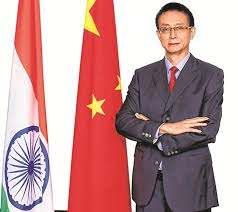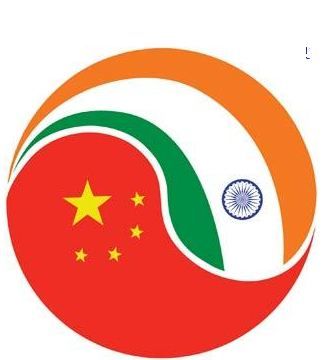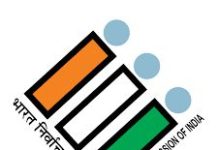 Fight Poverty, Connect People
Fight Poverty, Connect People
By Gucai Tang, Consul General, Consulate of the People’s Republic of China in Mumbai, India
This was the talk given by him at the Conference on Poverty Alleviation on 24 May 2021 (http://www.asiaconverge.com/2021/05/povert-alleviation-a-great-service-to-mankind/)
Distinguished guests,
Dear Friends,
My sincere gratitude goes to South-Indian Education Association, Yunnan International Research Centre and other organizations and friends from various sectors for supporting our event today. The Coronavirus tsunami prevails one wave after another. The entire world is exploring ways to fight the epidemic and looking for solutions to sustain livelihood of the masses. Facing the pandemic, the poor suffer the most. China and India together account for nearly one-third of the world’s population, and both face a historical mission of development and revival. Our ensuring the bottom-line and guaranteeing stable development are particularly important to the future of mankind.
Rural revitalization, noble responsibility
At the beginning of the Chinese year of Ox, President Xi Jinping’s announcement on thorough eradication of poverty nationwide attracted world’s attention. China had created a wonder in history of poverty alleviation. Over the past 40 years of reform and opening up, China has raised 770 million people out of poverty, contributing more than 70% of the global poverty reduction. China has realized eradication of poverty goal set by “UN’s 2030 Agenda for Sustainable Development” 10 years in advance and has provided a practical path to as well as built confidence in developing nations.
The rural revitalization strategy has drawn a grand blueprint for poverty alleviation in China. Both China and India are great agricultural civilizations, and most of the poor population resides in rural areas. In the long run, rural areas are engine rather than burden for healthy and sustainable development of China and India. A green environment is the everlasting gold mine. Poverty alleviation in China is not simple “blood transfusion” to the poor, but to encourage them to work hard for “blood-making” to get rich. It is an excellent example of a people-centered development strategy.
Developed Western countries are accustomed to practicing protectionism in their own agriculture industry. On the other hand, under the pretext of the so-called democracy and human rights issues, they disrupt the agriculture industry of developing countries. For instance, the West has been fabricating the so-called “cotton human rights” issue in Xinjiang, China. In fact, India’s cotton-spinning and agriculture have suffered a lot likewise. Their sinister plot is to create racial divisions politically and stifle the foundation of national rejuvenation economically, so that China and India will remain poor and weak forever. Let us share poverty reduction experience and work for common development , by doing so, China and India are making great contribution to world’s human rights cause.
Pandemic and so-called decoupling
Close neighbors are dearer than distant relatives. The Chinese governments of various levels, organizations and business community are making every effort to support India to fight the virus. As far as I know, China is providing the vast majority of oxygen concentrators and other medical supplies India needs. China has taken the lead to get out of the pandemic and resume its development, offering India and the region huge development opportunities.
The Western proclamation of “Hawkish strategy” and “Wolf pack tactics” will eventually shoot themselves in the foot. Some Indian media and think-tanks are arguing partially or even entirely decoupling with China. This opportunistic and protective idea will purely work in the opposite direction. The essence of India-China relationship is that how the two of the largest developing countries in the world live in harmony, develop and rejuvenate together. Let’s earnestly implement the consensus of the leaders of our two countries which is ‘not to pose threat to each other, provide development opportunities for each other’, and work together to make honest contributions for the early arrival of the Asian century.
Rise of Asia, RCEP VS. Quad
Yunnan is in the most southern part of China and is one of the most beautiful provinces. It has preferable advantages in promoting cooperation with South Asia. Mumbai and the Southwest coast of India have a long history of exchanges and cooperation with China. The integration and development of East Asia, South Asia and Southeast Asia are unstoppable. The vibrant Asia-Pacific region is leading towards a new wave of multilateralism and free trade. “The Regional Comprehensive Partnership Agreement” (RCEP) is a free trade zone with the largest population, the largest GDP and the greatest development potential worldwide. RCEP has always opened its door to India. After all, we are a community of Asian destiny.
“The group of four” (Quad) advocates the so-called democratic or voluntary alliance, and targets specific countries in an attempt to contain and suppress them. Frankly speaking, although the haze of the epidemic has not dissipated, the “Cold War” mentality and confrontation model have been outdated long back. As common sense, Asia is in the east of the world, it should not have the so-called East-West divisions or controversies at all. Following Western colonialism and militarism may give some comfort to the few, but it brings profound disasters and painful lessons to China, India and Asia. Big developing countries like China and India can achieve development and prosperity only when they stand on their own feet in their region. Looking back in the history, India and China being glorious and splendid ancient civilization, were once a paradise for western colonizers to explore. Only through common development by India and China, the rise of Asia and the return of civilization will truly be achieved.
People first, local touch
This year marks the 100th anniversary of the founding of the Communist Party of China. The secret of China’s governance and development lies in the fact that the CPC and the Chinese Government always put the people first. At the same time, as a political party with a global perspective, the Communist Party of China has always been committed to making new and greater contributions to mankind. Both China and India are facing historical responsibility for the national development and rejuvenation. It is common aspiration of the people to promote reform, develop hand in hand, step up pragmatical cooperation and improve livelihood. Maintaining and promoting Sino-Indian cooperation and development is safeguarding the fundamental interests of the people of both sides and the well-being of Asian people and the world.
My colleagues and I have visited the Wardha District of Maharashtra several times to help Chinese companies support local solar irrigation projects. Although the conditions there are difficult, it is a holy place where Gandhi led farmers for self-reliance, much like the old revolutionary base areas in China. As soon as I set my feet on the soil, I felt like being back home. I also felt all the hardships and difficulties. Success only comes through hard work. The hard-working and honest people of our two countries are of the same heart and soul. Let us work together to live up to the expectations and friendship of the great people of China and India.








































COMMENTS